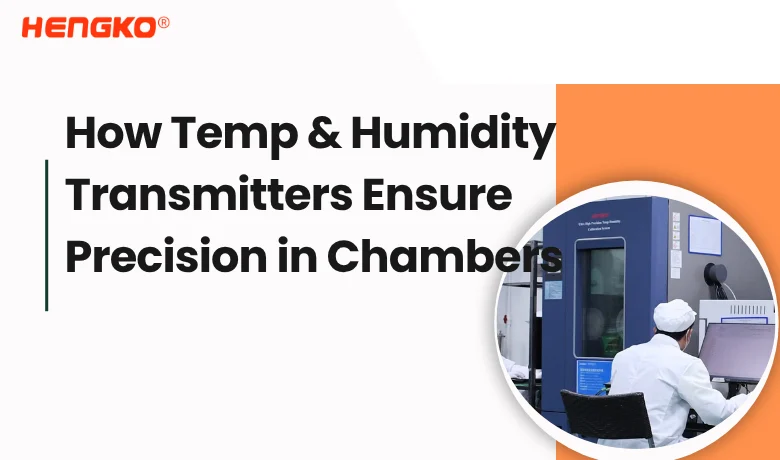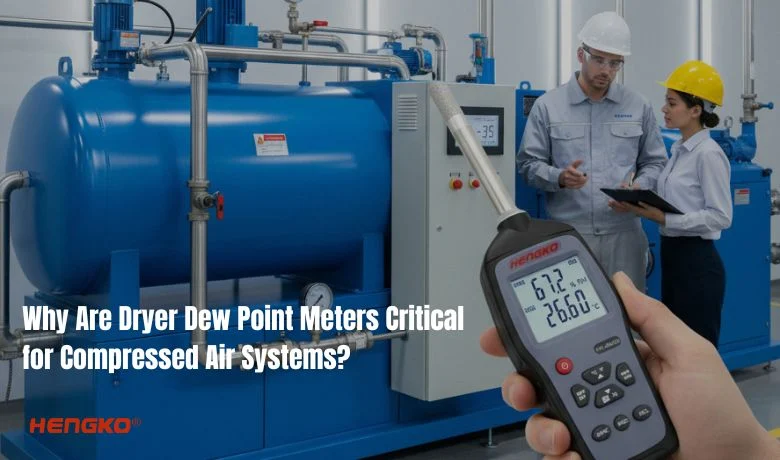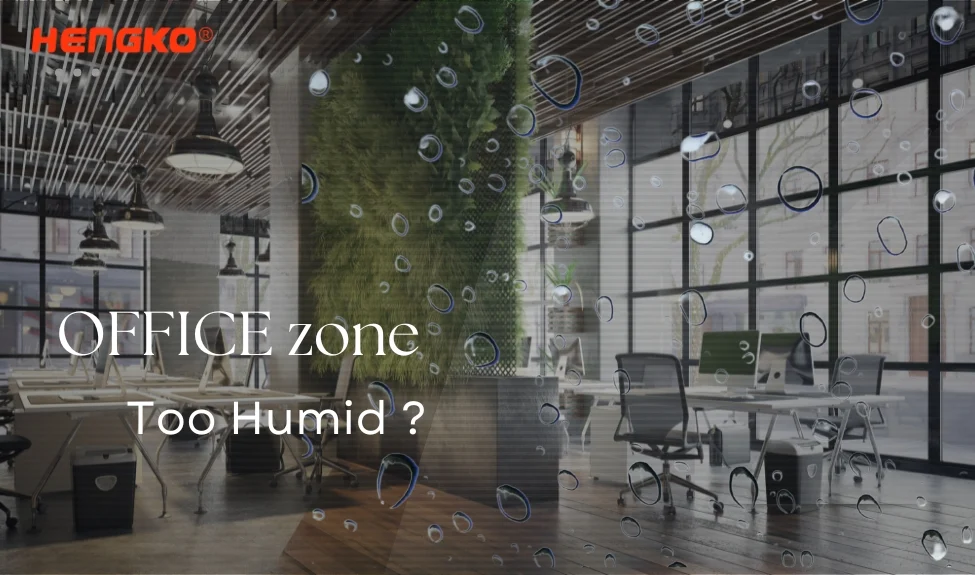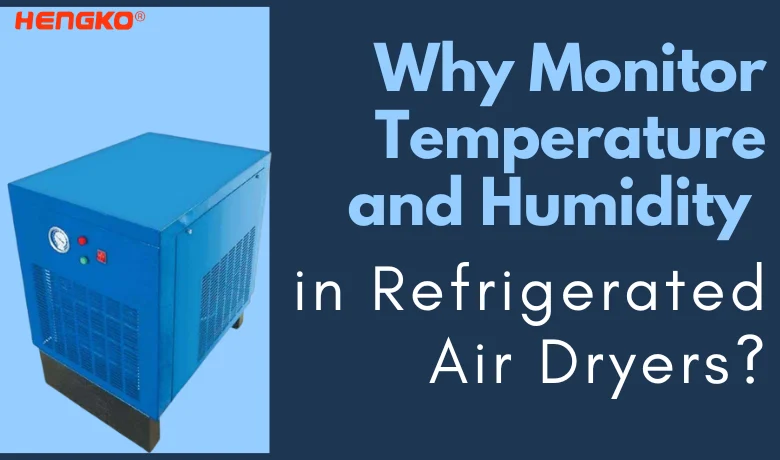はじめに
環境シミュレーションや信頼性試験の世界では、恒温恒湿槽は、エレクトロニクスや製薬から材料科学や航空宇宙まで、幅広い産業で不可欠なツールとなっています。これらの恒温恒湿槽は、正確に制御された気候を維持するように設計されており、長時間の試験サイクルにおいて安定した温度と相対湿度(RH)を保証します。
しかし、何がこのレベルの精度を可能にしているのだろうか?
すべての高性能チャンバーの中核には、重要でありながら見落とされがちなコンポーネント、温度・湿度トランスミッターがあります。温度・湿度トランスミッターは、チャンバーの "センサリー・システム "として、常に環境条件をモニターし、コントロール・ユニットにリアルタイムでデータを伝え、正確な調整と安定化を可能にします。
この記事では、恒温恒湿器制御における温湿度トランスミッターの役割、それらが満たさなければならない技術的要求、そして長期的な精度、安定性、システム性能を確保するための適切なトランスミッターの選び方についてご紹介します。
恒温恒湿槽の仕組みとその制御要件
つまり、恒温恒湿室はヒーター、クーラー、加湿器、除湿器を使って環境をコントロールする。センサーが状態を監視し、コントローラーがリアルタイムで温度と湿度を調整する。
管理要件:
-高い精度
-迅速な対応
-安定した性能
-記録とコンプライアンスのためのデータロギング
恒温恒湿槽の基本構造
一般的なチャンバーは、安定した温度と湿度を維持するために、複数のサブシステムを統合している:
1.冷暖房システム:
コンプレッサー、ヒーター、温度レギュレーターを使用し、目標温度に到達、保持する。
2.加湿・除湿システム:
蒸気発生器、超音波加湿器、乾燥剤などを使って、空気中の水分を加えたり取り除いたりする。
3.空気循環システム:
チャンバー内の調整された空気を均一に分布させ、高温または多湿のスポットをなくします。
4.センサーと制御システム:
温度・湿度トランスミッターを搭載し、リアルタイムで環境データをコントローラに提供することで、正確な調整が可能。
これらのコンポーネントはすべてクローズド・ループ・システムの一部であり、環境条件は常に測定され、設定値に合うように補正される。
環境管理要件
試験の信頼性を確保するため、チャンバーは厳しい環境性能基準を満たさなければならない。主な管理パラメーターは以下の通り:
パラメータ 代表的な要件
温度精度 ±0.2°C ~ ±0.5°C
湿度精度 ±1.5%RH~±3%RH
安定性 時間の経過に伴うドリフトを最小限に抑える
均一性 チャンバー全体で一貫した条件
応答時間 負荷や周囲の変化に素早く対応
不正確な管理は、無効な試験結果、製品の不安定性、または規制の不適合につながる可能性がある。
業界特有の環境制御への要求
さまざまな業界が、特定の、時にはより厳しい要件を課している:
-医薬品: ICHガイドラインに基づく医薬品の安定性試験では、正確に管理された条件(例えば25℃/60%RHや40℃/75%RH)での長期保存が求められることが多い。わずかな変動でも、薬効や保存期間に影響を及ぼす可能性があります。
-エレクトロニクスと半導体: コンポーネントは、熱や湿度のストレス下での耐久性をテストされます。過度の湿気は腐食の原因となり、不安定な温度はマイクロクラックやはんだ不良の原因となります。
-材料試験: ポリマー、金属、複合材料の老化、疲労、膨張特性は、環境との整合性に敏感です。逸脱があれば、材料の性能予測が損なわれる可能性があります。
業界特有の環境管理要求
| 産業 | 典型的な要件 | 精密さの理由 |
|---|---|---|
| 医薬品 | 25℃/60%RHまたは40℃/75%RH(ICHガイドラインによる) | 医薬品の安定性、有効性、保存性を維持するため |
| エレクトロニクス / 半導体 | 厳密な湿度・温度管理による熱・湿度サイクル | 腐食、マイクロクラック、はんだ接合不良を防ぐ |
| 材料試験 | 疲労、老化、膨張試験のための安定した温度/湿度 | 不正確な制御は性能予測を狂わせる |
このような厳しい条件を満たすためには、安定したインテリジェントな環境制御の基礎となる、信頼性の高い温湿度トランスミッターが不可欠となる。
温湿度トランスミッタの役割と価値
温度・湿度トランスミッターは単なる測定機器ではありません。定温・定湿チャンバーにおけるリアルタイムの環境制御を推進する中核となるセンサーです。チャンバーの「感覚システム」として機能するトランスミッターの役割は、システム全体の安定性、効率性、インテリジェンスに直接影響します。
-リアルタイム環境モニタリング
トランスミッターは、正確な温度とRHのデータを継続的に収集し、システムが必要なパラメータ内にあるかどうかを判断するために不可欠なフィードバックをコントローラに提供します。
-クローズドループフィードバックによる正確な調整
トランスミッターのデータはチャンバーの制御ロジックに送られ、冷凍、加熱、加湿、除湿をリアルタイムで調整できる。これにより、外的要因(周囲温度など)が変動しても、安定した状態を保つことができる。
-均一性と長期安定性の確保
重要な位置にトランスミッターを配置することで、システムはチャンバー内の空間的な温度や湿度の不均衡を検知することができる。これは均一な環境条件の維持に役立ち、特に繊細なサンプルやテストには重要です。
-リモート・モニタリングとデータ・ロギングの有効化
最近のトランスミッターはデジタル通信プロトコルをサポートしていることが多く、監視システムへの統合が可能である:
-遠隔監視
-アラームのトリガー
-監査やトレーサビリティのための履歴データ記録
環境チャンバーにおける温湿度トランスミッターの役割
| 機能 | 説明 |
|---|---|
| リアルタイム・モニタリング | 温度と湿度を継続的に測定し、コントローラに報告 |
| クローズド・ループ・フィードバック | 暖房、冷房、加湿の精密なシステム調整が可能 |
| 均一性と安定性 | 空間的な不均衡を検出し、内部状態を一定に保つ |
| 遠隔監視とデータロギング | アラーム、リモートアクセス、履歴データ記録をサポート |
医薬品検査や電子部品のエージングなどの用途では、このレベルの管理とトレーサビリティは有益であるだけでなく、必須である。
4.温湿度トランスミッタを選択する際の主な考慮事項
恒温恒湿チャンバーに適した温湿度トランスミッターを選択することは、正確な環境制御を確保する上で非常に重要です。ここでは、考慮すべき核となる要素をご紹介します:
測定精度
精度は譲れない。以下のようなトランスミッターを探してください:
少なくとも±0.2℃の温度精度
湿度精度±1.5%RH以上
このレベルの精度は、医薬品の安定性試験や半導体の信頼性評価のような繊細なアプリケーションには不可欠です。
応答時間と長期安定性
迅速な応答は、特に動的な試験環境では極めて重要です。さらに、トランスミッターは、校正の完全性を数ヶ月、あるいは数年にわたって維持するために、最小限の長期ドリフトを示す必要があります。
高速応答時間により、チャンバーは設定値の変化に素早く適応します。
ドリフトが少ないため、メンテナンス頻度が少なく、安定した性能を発揮します。
通信インターフェース
システムのアーキテクチャに応じて、標準的で信頼性の高い出力プロトコルをサポートするトランスミッターを選択してください:
Modbus RTU / RS485 - デジタル制御システムに最適
4-20mAまたは0-10V - アナログ工業環境で一般的
チャンバーのデータロガーまたは制御PLCとの互換性を確認する。
プローブ構成と保護レベル
環境チャンバーは、高湿度、腐食性、あるいは結露しやすい環境で使用されることがよくあります。そのため
結露に強く、腐食に強いセンサーを選ぶ。
ほこりや湿気の侵入を防ぐために、少なくともIP65の保護等級が必要です。
極端な用途では、コーティングされたプローブやステンレス製ハウジングが必要になる場合があります。
設置の柔軟性
優れたトランスミッターは、さまざまなチャンバー設計に適応しなければならない:
壁取付型、ダクト取付型、リモートプローブ(スプリットタイプ)があります。
フランジ取り付けやカスタムブラケットに対応し、統合の容易さを向上。
スペースに制約のある環境では、コンパクトな設計が役立ちます。
これらの要素を考慮することで、エンジニアは、選択したトランスミッタがチャンバーの技術的要件を満たすだけでなく、長期的なシステムの信頼性とメンテナンスの容易さにも貢献することを保証することができる。
応答時間と長期安定性
迅速な応答は、特に動的な試験環境では極めて重要です。さらに、トランスミッターは、校正の完全性を数ヶ月、あるいは数年にわたって維持するために、最小限の長期ドリフトを示す必要があります。
高速応答時間により、チャンバーは設定値の変化に素早く適応します。
ドリフトが少ないため、メンテナンス頻度が少なく、安定した性能を発揮します。
通信インターフェース
システムのアーキテクチャに応じて、標準的で信頼性の高い出力プロトコルをサポートするトランスミッターを選択してください:
Modbus RTU / RS485 - デジタル制御システムに最適
4-20mAまたは0-10V - アナログ工業環境で一般的
チャンバーのデータロガーまたは制御PLCとの互換性を確認する。
プローブ構成と保護レベル
環境チャンバーは、高湿度、腐食性、あるいは結露しやすい環境で使用されることがよくあります。そのため
結露に強く、腐食に強いセンサーを選ぶ。
ほこりや湿気の侵入を防ぐために、少なくともIP65の保護等級が必要です。
極端な用途では、コーティングされたプローブやステンレス製ハウジングが必要になる場合があります。
設置の柔軟性
優れたトランスミッターは、さまざまなチャンバー設計に適応しなければならない:
壁取付型、ダクト取付型、リモートプローブ(スプリットタイプ)があります。
フランジ取り付けやカスタムブラケットに対応し、統合の容易さを向上。
スペースに制約のある環境では、コンパクトな設計が役立ちます。
温湿度トランスミッタを選ぶ際のポイント
| ファクター | 何を見るべきか |
|---|---|
| 測定精度 | 温度±0.2℃、湿度±1.5%RH - 製薬および半導体試験に不可欠 |
| 応答時間と安定性 | 変化に素早く対応し、長期的なドリフトが少ないため、メンテナンスが軽減され、安定した性能を発揮する |
| 通信インターフェース | デジタルシステム用Modbus RTU / RS485、アナログ環境用4-20mA / 0-10V |
| プローブと保護レベル | IP65以上、耐結露・耐腐食性センサー、過酷な条件下用コーティングまたはステンレススチールプローブ |
| 設置の柔軟性 | 壁、ダクト、リモートプローブタイプ、フランジサポート、狭いスペース用のコンパクト設計 |
これらの要素を考慮することで、エンジニアは、選択したトランスミッタがチャンバーの技術的要件を満たすだけでなく、長期的なシステムの信頼性とメンテナンスの容易さにも貢献することを確認することができる。
業界のケーススタディ温湿度トランスミッタの用途
恒温恒湿チャンバーにおける温湿度トランスミッターの実際の価値を説明するために、正確な環境制御が重要であるいくつかの業界特有のケーススタディを見てみよう。
ケース1:エレクトロニクス業界 - PCB信頼性試験
チャレンジだ:
プリント回路基板(PCB)は湿気や温度変化に敏感で、過酷な環境では早期故障につながる可能性があります。
解決策
ある大手電子機器メーカーは、±1%RH精度の湿度トランスミッターと±0.2℃の温度センサーをクライメート・チャンバーに組み込みました。これらのトランスミッターは、熱サイクルと湿度エージング試験中に、チャンバーの制御システムにリアルタイムでフィードバックを提供しました。
結果
データ精度の向上により、故障の早期発見が可能になり、製品の長期信頼性が向上した。
ケース2:製薬業界 - 安定性試験
チャレンジだ:
医薬品製剤は、ICHガイドラインに従って厳密に制御された環境条件下で試験されなければならない(例えば、25℃/60%RHまたは40℃/75%RH)。
解決策
高精度の温湿度トランスミッターがウォークイン安定性チャンバーに組み込まれた。デジタル出力は集中検証システムに接続され、24時間365日のコンプライアンス監視を保証した。
結果
同社は、監査に耐えうる文書化と規制遵守を確保し、バッチ不合格のリスクを低減した。
ケース3:材料研究 - 加速老化
チャレンジだ:
先端ポリマーを研究しているある研究所では、10年間の環境暴露を数週間でシミュレートする必要があった。
解決策
研究者らは、積極的なランプ&ソークプロファイルでも±0.1℃、±0.8%RHの安定性を維持できる高速応答トランスミッターを備えたチャンバーを使用した。
結果
このラボでは、テストサイクル全体で再現性のある結果を達成し、環境ドリフトによるテストのばらつきを最小限に抑えた。
ケース4:航空宇宙 - コンポーネントの認定
チャレンジだ:
アビオニクス・コンポーネントは、飛行条件をシミュレートするため、極限の環境下で適格性試験を受ける。
解決策
急速な温度変化の下でも正確な制御を維持するため、広い動作範囲(例:-40℃~+80℃、0-100%RH)を持つ頑丈なトランスミッターがチャンバー内で使用された。
結果
このシステムは、安定した環境フィードバックで高ストレス試験をサポートし、メーカーが厳しい航空規格を満たすのに貢献した。
HENGKO 温湿度トランスミッタ:信頼性の高いソリューション
恒温恒湿槽の厳しい要求に応えるため、HENGKOは高性能な温湿度トランスミッタを幅広く取り揃えています。工業用グレードの部品と高度なセンシング技術で設計された当社のトランスミッタは、次のような特長を備えています:
-高い精度
-高速応答と低ドリフトによる長期信頼性
-RS485 Modbus RTU、4-20mA、0-10Vを含む複数の出力オプション
-結露防止、耐腐食性、IP65/IP67規格のプローブ
-壁掛け、フランジ取り付け、分割タイプなど、柔軟な設置オプション
HENGKOのトランスミッターは、恒温恒湿器の新設、既存システムのアップグレードを問わず、安定した恒温恒湿の実現をサポートします。 環境制御 とシステム性能の向上。
チャンバーの精度と安定性を高める準備はできていますか?HENGKOが解決します。sales@hengkometer.com。






